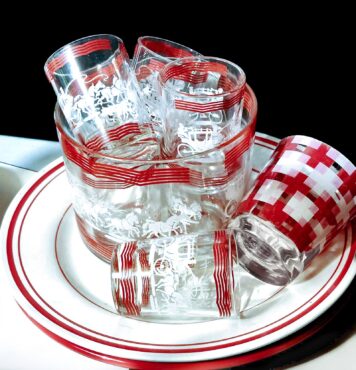 Fiesta dinnerware is always popular and getting hard to find. It took several days to find these red pieces.
Fiesta dinnerware is always popular and getting hard to find. It took several days to find these red pieces.
The history of Fiesta dinnerware can be traced back to the 1840s in East Liverpool, Ohio, where the Laughlin brothers opened a pottery business. The original colors were red, cobalt blue, light green and ivory. The rarest and most sought-after is medium green produced from 1959 to 1969.
Having had the Pyrex Museum and been in the thrifting and kitchen business for some 10 years, I have talked to and interviewed hundreds of people. It shouldn’t be surprising that many, if not most, bring up family connections.
I, for one, have special Fiesta memories. As a little girl, I spent a lot of time with my Guatemalan grandmother, Sophia. She and sister Tina arrived around 1915 and Sophia soon met and married George Morris. They lived in Bremerton in a house on 6th Street where the Salvation Army Chapel now sits.
The house was small and the kitchen was crude by today’s standards — a room with only a stove, refrigerator and a small table and chair set. Attached was a tiny walk-in pantry with a sink and cupboards. The dishes, multicolored Fiesta. She let me dunk toast in red coffee mugs, and plates seemed extra bright when serving beans and rice or steak fried in bacon lard.
Grandpa died early. After that, so many days, it was just grandma and me at the table with a window that looked out toward Warren Avenue.
Here is a thrifting tip. People often donate sets or collections, like the famous salt and pepper shaker collections. When donated, the store needs to clean, prep and tag the items before bringing them out for sale. This sometimes doesn’t happen all at once, and the items may be brought out separately on different days, as was the case with these red Fiesta beauties.












